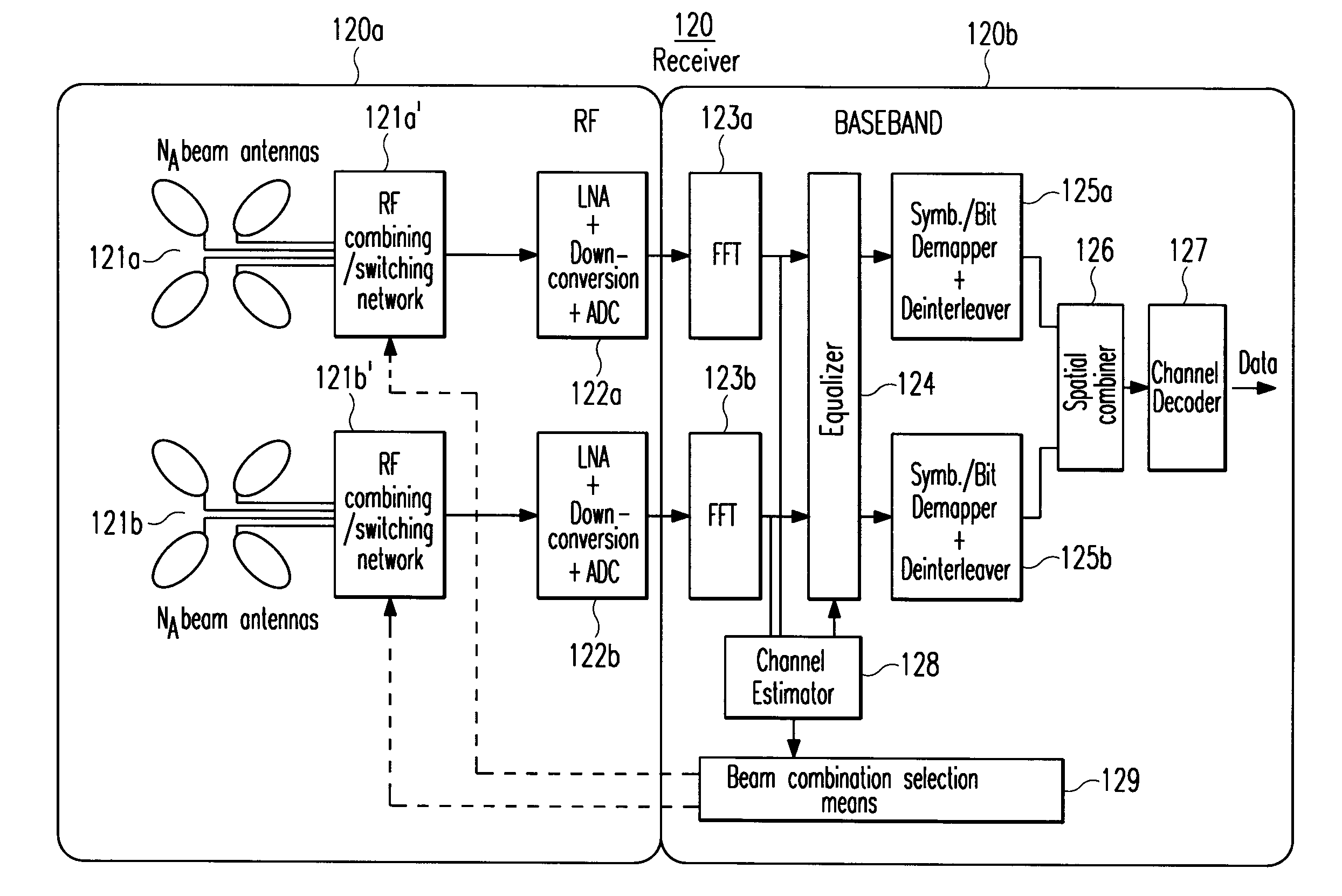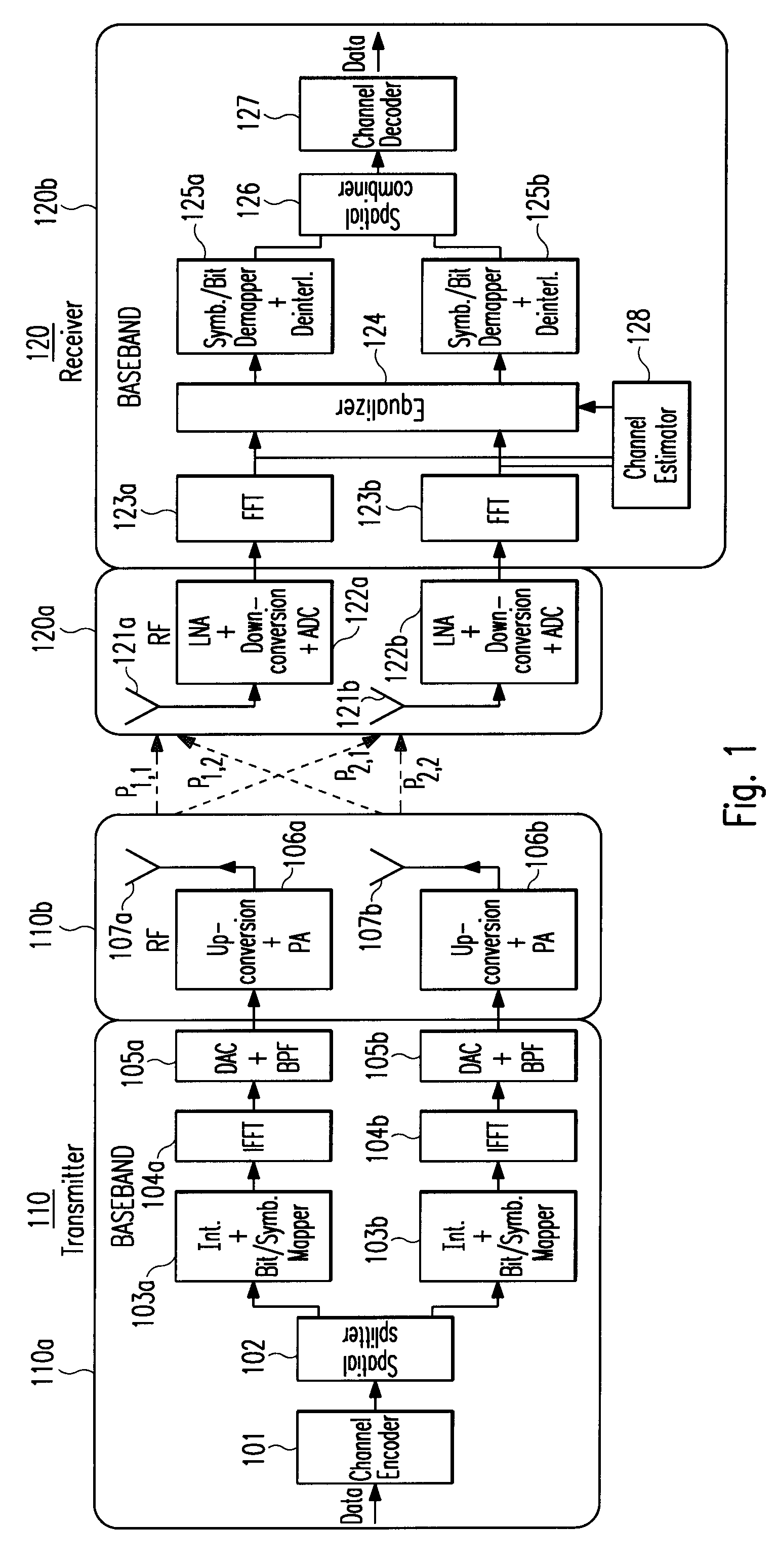Multiple-input multiple-output spatial multiplexing system with dynamic antenna beam combination selection capability
a spatial multiplexing and multi-input technology, applied in multiplex communication, multi-frequency code systems, polarisation/directional diversity, etc., can solve the problems of reducing performance gain and no criterion for controlling separate rf-aaa, and achieve the effect of maximizing the average signal-to-interference-plus-noise ratio l (sinrs) and minimizing the correlation coefficien
- Summary
- Abstract
- Description
- Claims
- Application Information
AI Technical Summary
Benefits of technology
Problems solved by technology
Method used
Image
Examples
Embodiment Construction
[0053]In the following, the present invention will be explained in more detail with respect to special embodiments and in relation to the accompanying drawings. The basic principle of the invention will be explained based on a MIMO wireless communication system which uses multi-carrier modulation such as Orthogonal Frequency-Division Multiplexing (OFDM). Of course, the described principle can also be applied to any other not OFDM-based wireless MIMO spatial multiplexing system.
[0054]FIG. 1 shows a block diagram of an OFDM-based wireless MIMO spatial multiplexing system with N=2 transmit antennas 107a and 107b on a wireless transmitter side 110 and M=2 receive antennas 121a and 121b on a wireless receiver side 120, wherein the transmit antennas 107a+b and / or the receive antennas 121a+b may e.g. be realized as fixed beam antennas. The achievable data transmission rate R is therefore two times higher than in a non-MIMO wireless communication system. In this connection, it
should be ment...
PUM
 Login to View More
Login to View More Abstract
Description
Claims
Application Information
 Login to View More
Login to View More - R&D
- Intellectual Property
- Life Sciences
- Materials
- Tech Scout
- Unparalleled Data Quality
- Higher Quality Content
- 60% Fewer Hallucinations
Browse by: Latest US Patents, China's latest patents, Technical Efficacy Thesaurus, Application Domain, Technology Topic, Popular Technical Reports.
© 2025 PatSnap. All rights reserved.Legal|Privacy policy|Modern Slavery Act Transparency Statement|Sitemap|About US| Contact US: help@patsnap.com



